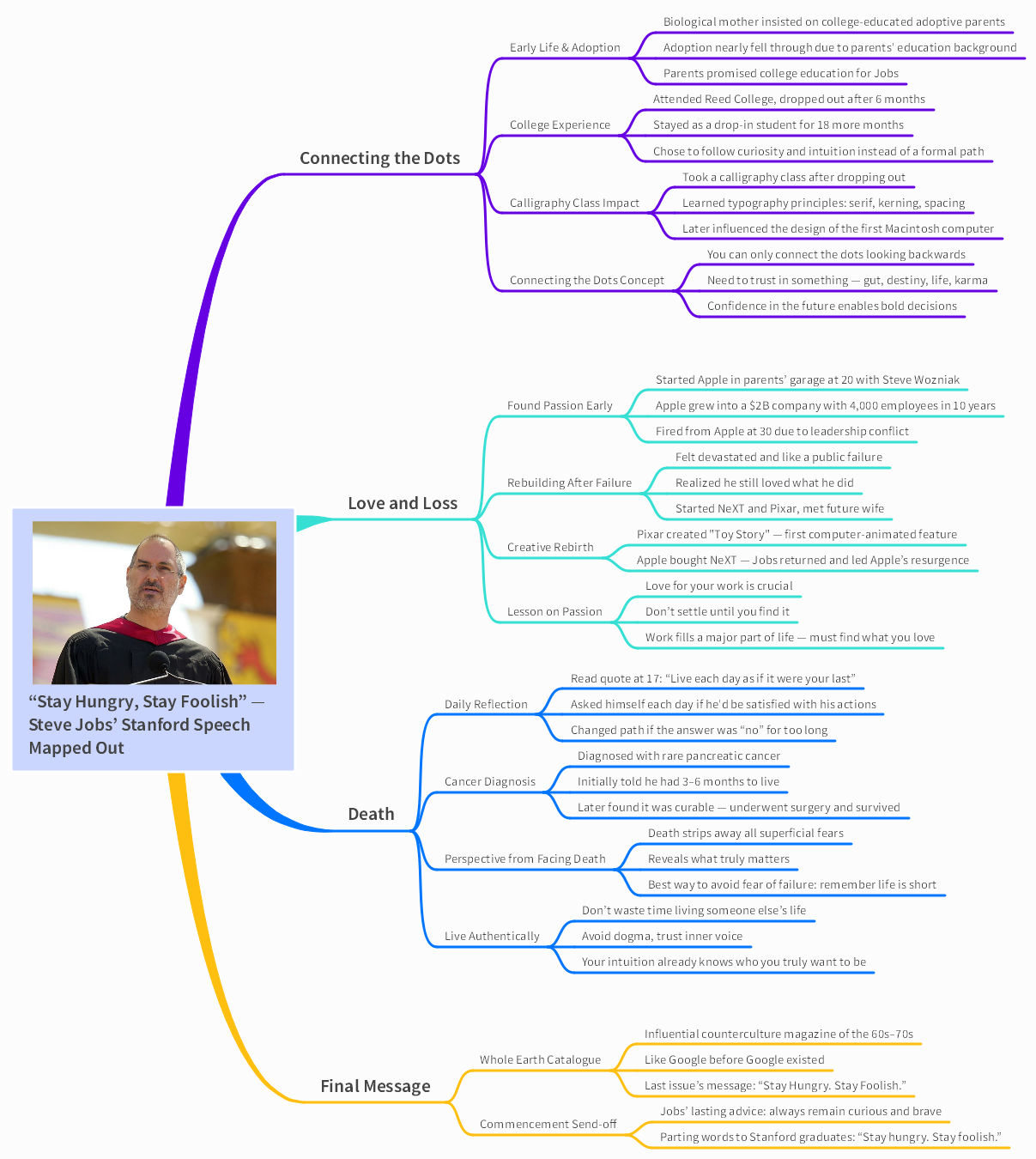🎯 Connecting the Dots
Steve Jobs began his 2005 Stanford commencement speech with the theme of connecting the dots.
🍼 Early Life & Adoption
Jobs was adopted under unique circumstances. His biological mother, a young unwed graduate student, insisted that he be adopted by college graduates. However, the initial adoptive couple backed out upon learning Jobs was a boy. Eventually, his future parents promised he would attend college, which persuaded his birth mother to sign the adoption papers.
🎓 College Experience
Jobs enrolled at Reed College but dropped out after six months. He remained as a drop-in student for 18 months, attending only classes that interested him. This freedom allowed him to explore his passions, even if the path seemed uncertain at the time.
✍️ Calligraphy Class Impact
One of the most influential classes he attended was a calligraphy course. He learned about typefaces, kerning, and spacing—elements that would later define the Macintosh’s typography. Jobs credited this course for the Mac’s unique design aesthetic, which even influenced Windows.
🔗 Connecting the Dots Concept
Jobs emphasized that you can’t connect the dots looking forward—only backward. Therefore, trust in something, whether it’s your gut, karma, or destiny, gives you the courage to follow your heart, even when the path is unclear.
💔 Love and Loss
Jobs’ second story revolved around love, loss, and resilience.
🚀 Found Passion Early
He discovered his passion for computers early and co-founded Apple at age 20 with Steve Wozniak. Within ten years, Apple had grown into a billion-dollar enterprise with thousands of employees.
🔥 Rebuilding After Failure
Despite the company’s success, Jobs was fired at age 30 due to a clash in leadership vision. It was a public and painful experience. But he soon realized that he still loved what he did.
🎨 Creative Rebirth
Jobs went on to found NeXT and Pixar, and met his future wife. Pixar revolutionized animation with “Toy Story,” and NeXT’s technology became central to Apple’s comeback when the company acquired it.
💖 Lesson on Passion
Jobs urged graduates to find what they love and never settle. He said the only way to do great work is to love what you do. Like a great relationship, your passion will only deepen over time.
💀 Death
Jobs’ third story addressed mortality and its impact on how we live.
🪞 Daily Reflection
Inspired by a quote at 17, Jobs asked himself daily: “If today were the last day of my life, would I want to do what I am about to do today?” If the answer was “no” for too many days, he knew it was time for change.
🩺 Cancer Diagnosis
Jobs was diagnosed with what appeared to be terminal pancreatic cancer. He was told to “get his affairs in order.” However, a biopsy later revealed it was a rare form of curable cancer. Surgery saved his life.
🧠 Perspective from Facing Death
Facing death made him realize that many fears and societal expectations fall away in the face of mortality. Death, to him, was life’s greatest invention—a change agent that clears the old to make way for the new.
🧭 Live Authentically
Jobs warned against living someone else’s life. He urged graduates not to be trapped by dogma and to trust their inner voice. Deep inside, we already know who we want to become.
📚 Final Message
Jobs closed with a story about The Whole Earth Catalogue, a counterculture publication from the 60s.
📖 Whole Earth Catalogue
He described it as “Google in paperback form” before the internet era. The final issue of the magazine had a cover photo of a country road with the farewell message: “Stay Hungry. Stay Foolish.”
🎓 Commencement Send-off
Jobs adopted this as his own message and extended it to the graduating class. His timeless advice remains: Stay hungry. Stay foolish.
